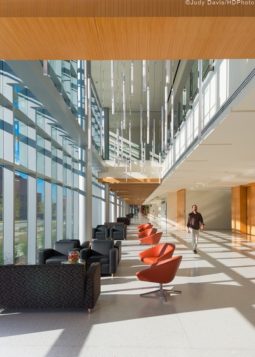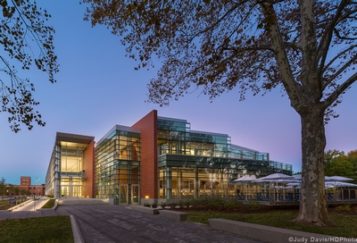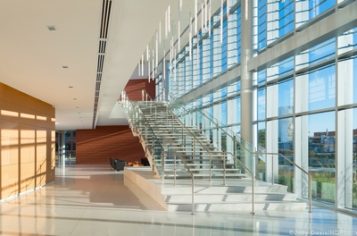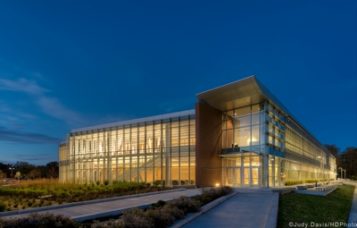
PHILADELPHIA, Pa., and WASHINGTON, D.C. — The National Aeronautics and Space Administration Integrated Engineering Services Building in Hampton, Virginia, has been recognized with a 2015 Federal Energy Management Program Better Buildings Award by the U.S. Department of Energy. Hill International was the construction manager on the project working on behalf of the U.S. General Services Administration.
The FEMP Better Buildings Award recognizes individuals and organizations who demonstrate significant contributions to energy and water efficiency within the federal government. This annual award program highlights outstanding achievements in sustainable practices in high-performance facilities, conserving energy and water efficiency, showcasing the use of renewable energy and the efficient management of fleet and transportation methods.
The IESB is the second new facility completed at NASA Langley under a NASA Revitalization Plan. The concept began in 2003 when NASA partnered with GSA’s Mid-Atlantic Region to develop a modernization plan for the NASA Langley campus. This plan addresses NASA’s strategic and infrastructure challenges and includes eight new facilities, renovation of critical infrastructure and demolition of non-essential assets.
The IESB project yielded successful and favorable results in reducing NASA’s footprint. Eight outdated and inefficient facilities encompassing 172,000 square feet at NASA Langley were demolished and replaced with a smaller, more efficient 138,000-square-foot IESB facility. This solution also resulted in a 34,000 square foot increase in available green space at Langley. Construction of the IESB, which has been certified LEED Gold by the U.S. Green Building Council, was completed in September 2014.
The project team conducted a series of partnering sessions throughout the project, working together to make sustainability a priority while exploring options to reduce construction and maintenance costs, and ensuring maintainability and reliability. The new IESB facility requires 60 percent less energy to operate than other facilities on the campus, and is expected to use more than 35 percent of renewable energy through “Green-e” accredited Tradable Renewable Certificates over a 2-year period. Green-e is an independent certification and verification program for renewable energy and greenhouse gas emission reductions in the retail market.
Building features include energy-efficient lighting and control systems, perimeter daylight harvesting with time-of-day lighting control and high performance insulating glass with exterior solar shading. A hybrid geothermal system for high cooling demand applications was incorporated with a 60 ton supplementary fluid cooler to complete the cooling demand in the summer months. The site supports two water retention areas to minimize stormwater runoff, and potable water use was reduced by more than 47 percent. Collectively, these features support NASA Langley’s sustainability goals and save or avoid $3.6 million per year in operations and maintenance costs.
“NASA Langley would like to express appreciation to the IESB team members from GSA, AECOM, Whiting-Turner, Cooper Cary and Hill International for the planning, design and construction of Langley’s latest project,” said Gary Stergin, NASA Langley project manager. “The team commitment to energy and water efficiency will result in substantial operational cost savings for the agency and U.S. government,” added Stergin.
Photos courtesy of ©2014 Judy Davis/Hoachlander Davis Photography.






 Join our thriving community of 70,000+ superintendents and trade professionals on LinkedIn!
Join our thriving community of 70,000+ superintendents and trade professionals on LinkedIn! Search our job board for your next opportunity, or post an opening within your company.
Search our job board for your next opportunity, or post an opening within your company. Subscribe to our monthly
Construction Superintendent eNewsletter and stay current.
Subscribe to our monthly
Construction Superintendent eNewsletter and stay current.